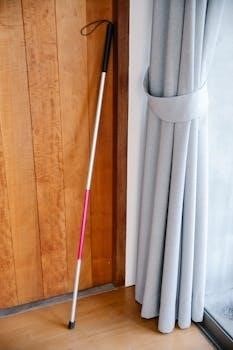fly line weight guide
Fly Line Weight Guide⁚ A Comprehensive Overview
This guide provides parameters for fly line sizes, referencing the actual weight in grains or grams. Understanding fly line weight is vital for casting and rod performance. Selecting the right weight ensures a balanced and effective fly fishing experience.
Fly line weight is a standardized measurement classifying the fly line’s mass, typically in grains or grams, crucial for effective casting. Lines are categorized in increments (1-12), influencing rod performance. Selecting the correct weight optimizes casting distance, presentation, and overall fishing experience. AFTMA (now AFFTA) established standards, ensuring compatibility between rods and lines. Matching line weight to rod weight creates balanced outfits, improving accuracy and control. Lighter lines are ideal for delicate presentations with smaller flies, while heavier lines handle larger flies and windy conditions. Understanding fly line weight is essential for anglers seeking to maximize their casting and fishing success across diverse environments.
Understanding Fly Line Weight Standards
Fly line weight standards, set by AFFTA, provide essential parameters for line sizes. These standards ensure proper matching of lines to rods, optimizing casting performance and overall fly fishing efficiency.
AFFTA Standards for Fly Line Weight
The American Fly Fishing Trade Association (AFFTA) establishes standardized weights for fly lines, offering detailed measurements. These standards, crucial for matching lines to rods, are referenced with grain weights. AFFTA standards reference weights, facilitating perfect casting fits for rods. These standards provide weights in both grains and grams for the initial 30 feet of fly line. Established in 1959, these weights offer a reference range that is useful for fly rods. The AFFTA standards set a baseline for all lines measured to provide a reference range. This is important when pairing rods for the perfect casting fit. The AFFTA chart allows referencing weights for an optimal fly rod and line pairing.
The Importance of Grain Weight in Fly Line Selection
Grain weight, the measure of the first 30 feet of fly line, excluding the leader attachment, is essential for rod pairing. Selecting the appropriate grain weight ensures optimal casting performance and rod loading. Choosing the correct grain weight helps in achieving balanced fly presentation. Understanding grain weight allows anglers to match lines and rods accurately, improving casting efficiency. This precise measurement enables anglers to fine-tune their setup for specific fishing conditions and target species. Ignoring grain weight can lead to poor casting and ineffective fly presentation. Grain weight consideration results in better control, distance, and overall fishing success. It is a critical factor in achieving casting success.

Fly Line Weight Chart⁚ A Detailed Breakdown
This section details fly line weights, outlining ideal uses for each. The chart provides guidance for line selection, aiding anglers in matching lines to fishing scenarios and target species effectively.
Fly Line Weights 1-3⁚ Applications and Best Uses
Fly line weights 1-3 represent the lightest options, ideal for delicate presentations. These are best suited for targeting small fish like panfish and small trout. Their finesse excels in tiny streams where spooking fish is a concern. These lighter lines facilitate casting small flies with precision. They are also suitable for situations demanding subtle presentations to wary fish. Such weights are particularly advantageous when fishing clear, slow-moving waters. Anglers often choose these for a more intimate connection with the fish. The light weight minimizes disturbance, increasing success in challenging environments. Therefore, these weights are perfect for specialized scenarios.
Fly Line Weight 4⁚ Versatility and Target Species
Fly line weight 4 offers notable versatility, suitable for panfish and most trout species, excluding the very largest. It performs well in small to mid-sized streams where extensive casts aren’t necessary. This weight provides a balance of delicacy and power, accommodating various fly sizes. The number 4 line remains effective in situations requiring both subtle presentations and moderate casting distance. This line is a popular choice for anglers targeting trout in streams and rivers. Its versatility extends to different fly fishing techniques, including dry fly and nymph fishing. It’s user-friendly, making it suitable for both beginners and experienced anglers seeking all-around performance. Consider a number 4 for general trout and panfish fishing.
Fly Line Weights 5-7⁚ All-Around Performance
Fly line weights 5 through 7 represent a sweet spot for all-around performance in fly fishing, adept at handling diverse conditions and species. Weight 5 is excellent for medium-sized trout and general stream fishing, while weight 6 offers enhanced power for larger trout and windy conditions. Weight 7 steps up further, capable of managing larger flies and battling stronger fish, suitable for bass or steelhead. These weights offer a balance of finesse and power. These weights will allow anglers to use a variety of fly sizes and techniques effectively. They are versatile choices for anglers who fish in various environments. Moreover, these weights are popular choices for both beginner and experienced fly fishers, offering ease of casting and presentation.
Fly Line Weights 8-12⁚ Targeting Larger Species
Fly line weights 8 through 12 are specifically designed for anglers targeting larger, more powerful species in demanding conditions. Weight 8 is commonly used for salmon, steelhead, and larger warm-water species like bass. Weight 9 and 10 offer increased backbone for tackling saltwater species such as bonefish, redfish, and smaller tarpon. Lines of 11 and 12 are reserved for truly big game fish, including large tarpon, tuna, and billfish. These heavier lines are essential for casting large flies, handling strong currents, and battling fish that can test the limits of both angler and gear. These weights are necessary for species that require heavier lines and specialized techniques. They are for experienced anglers.

Matching Fly Line Weight to Rod and Reel
Properly matching fly line weight to your rod and reel is crucial for optimal casting and balance. This ensures efficient energy transfer and prevents damage to your equipment, enhancing your overall fishing experience.
Fly Rod Weight and Its Influence on Line Selection
Fly rod weight dictates suitable fly line weights and, consequently, the flies cast effectively. Lightweight rods excel at casting light flies with delicate presentations, ideal for easily spooked fish. Heavier rods are best for casting heavy flies and bait, targeting larger species. Matching rod and line weight enhances casting and control, adapting to conditions and target fish.
Selecting the correct fly rod weight is essential because it determines the range of fly line weights that can be effectively loaded and cast. The fly line weight must match the rod’s casting capabilities to ensure the rod loads properly, maximizing casting distance and accuracy. The fly rod must be carefully chosen to be well-suited for the type of fish you’re trying to catch.
Fly Reel Weight Considerations
While fly line weight directly impacts casting performance, fly reel weight is crucial for balance and comfort. A well-balanced outfit reduces fatigue during long fishing days. The reel should complement the rod’s weight, preventing a tip-heavy or butt-heavy feel. This balance enhances casting accuracy and overall fishing experience.
Consider the reel’s weight relative to the rod. A heavier reel balances a lighter rod, and vice versa; Furthermore, the arbor size affects line retrieval rate. Larger arbors retrieve line faster, beneficial when fighting fast-running fish. The drag system must also match the target species; smooth, reliable drag prevents line breakage with larger fish. Ultimately, reel weight ensures comfort.
Factors Affecting Fly Line Weight Choice
Fly line weight selection hinges on various factors. These include the targeted fish species, prevailing fishing conditions, and the specific environment. Matching these elements optimizes casting performance and presentation accuracy for a successful angling experience.
Fish Species and Size
The size and species of your target fish significantly influence fly line weight choice. Smaller fish, like panfish and small trout, require lighter lines (1-4 weight) for delicate presentations. These lighter lines prevent spooking easily-frightened fish in calmer waters. Larger species, such as salmon, peacock bass or permit, demand heavier lines (8-12 weight) to handle bigger flies and provide the necessary power for casting and fighting. The fly rod weight, influenced by these factors, subsequently determines the appropriate line weight and the size of flies that can be effectively cast. Matching the line weight to the species and size ensures optimal performance, increasing your chances of a successful catch by offering correct fly control, distance, and presentation.
Fishing Conditions and Environment
Environmental factors and fishing conditions are crucial in selecting the appropriate fly line weight. In small streams and situations needing shorter casts, lighter lines are preferred for gentle presentations. Larger rivers or lakes, where longer casts are necessary, often require heavier lines to combat wind resistance and achieve distance. Wind is a significant factor; heavier lines cut through wind more effectively. The depth you intend to fish at also influences line choice. Consider the water clarity; clear water necessitates a delicate presentation with lighter lines to avoid alarming fish. Conversely, murky waters might allow for heavier lines without spooking them. Matching line weight to the environment ensures optimal fly control, distance, and presentation, maximizing your effectiveness in varied conditions.

Fly Line Weight and Casting Performance
Fly line weight significantly impacts casting distance and presentation. Matching the line to the rod optimizes casting efficiency. A balanced setup enhances accuracy and control, leading to improved fishing success.
The Impact of Line Weight on Casting Distance
Line weight plays a crucial role in achieving optimal casting distance. A heavier line, within the rod’s recommended range, can load the rod more effectively, resulting in longer casts. Conversely, an underweight line may not load the rod sufficiently, reducing casting distance. Matching the line weight to the rod’s action and the angler’s casting style is essential for maximizing distance. Factors like wind resistance and fly size also influence how line weight affects the cast. Experimentation within the recommended range helps determine the ideal weight for specific conditions and desired casting distances. Proper technique combined with correct line weight ensures efficient energy transfer, leading to greater distance and accuracy.
Line Weight and Presentation
Line weight significantly influences fly presentation, a critical aspect of successful fly fishing. Lighter lines, such as those in the 1-3 weight range, are ideal for delicate presentations, especially when targeting easily spooked fish in calm waters. These lines allow for softer landings and minimize disturbance. Heavier lines, while providing greater casting distance, can result in less subtle presentations. Matching the line weight to the fly size and the water conditions is crucial. A heavier line may be necessary for larger flies or windy conditions, but it’s essential to ensure the presentation remains natural. Anglers often adjust leader length and material to further refine presentation, compensating for line weight.

Choosing the Right Fly Line Weight
Selecting the appropriate fly line weight is paramount for effective fly fishing, impacting casting ease, distance, and presentation. Consider the target species, fishing conditions, and your rod’s specifications. Lighter lines excel for delicate presentations, while heavier lines handle larger flies and challenging environments; Matching the line weight to your rod is crucial for optimal performance, preventing damage and ensuring accurate casts. Experimentation and experience play vital roles in finding the perfect match. Consulting fly line weight charts and seeking advice from experienced anglers can further refine your decision. Ultimately, the right fly line weight enhances your angling success and overall enjoyment of the sport. Remember to prioritize balance and suitability.
